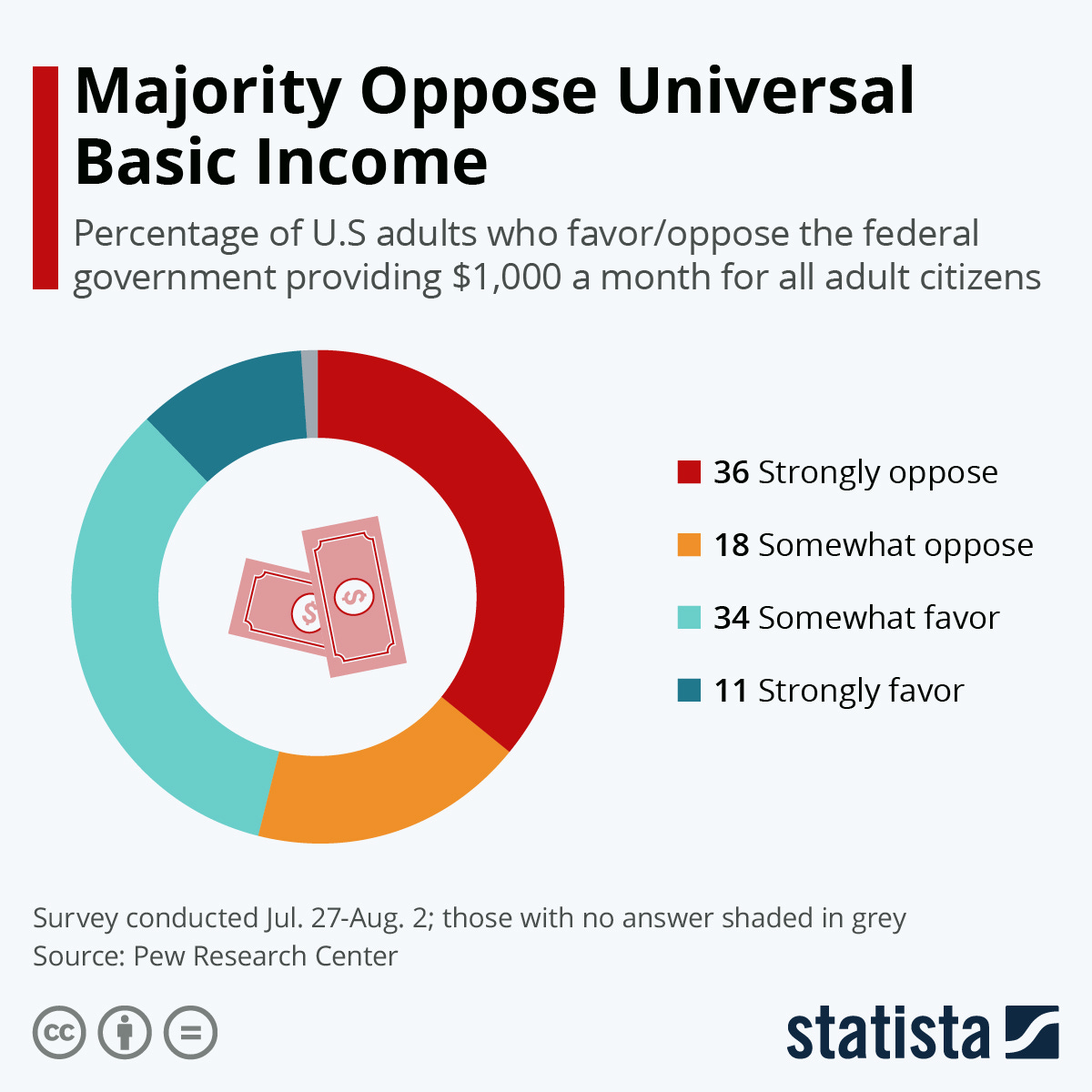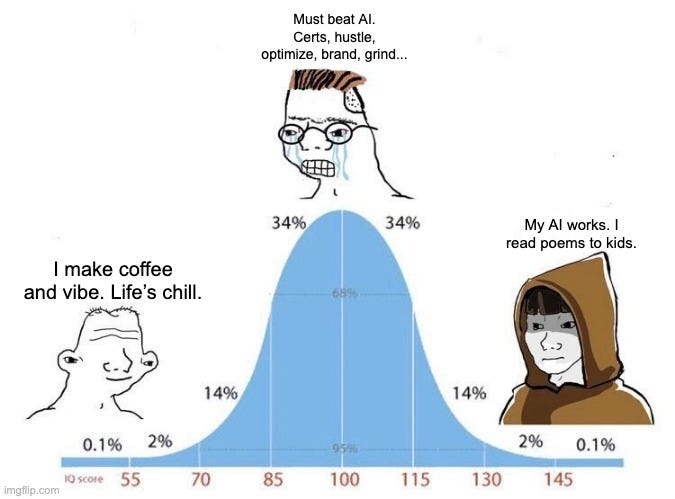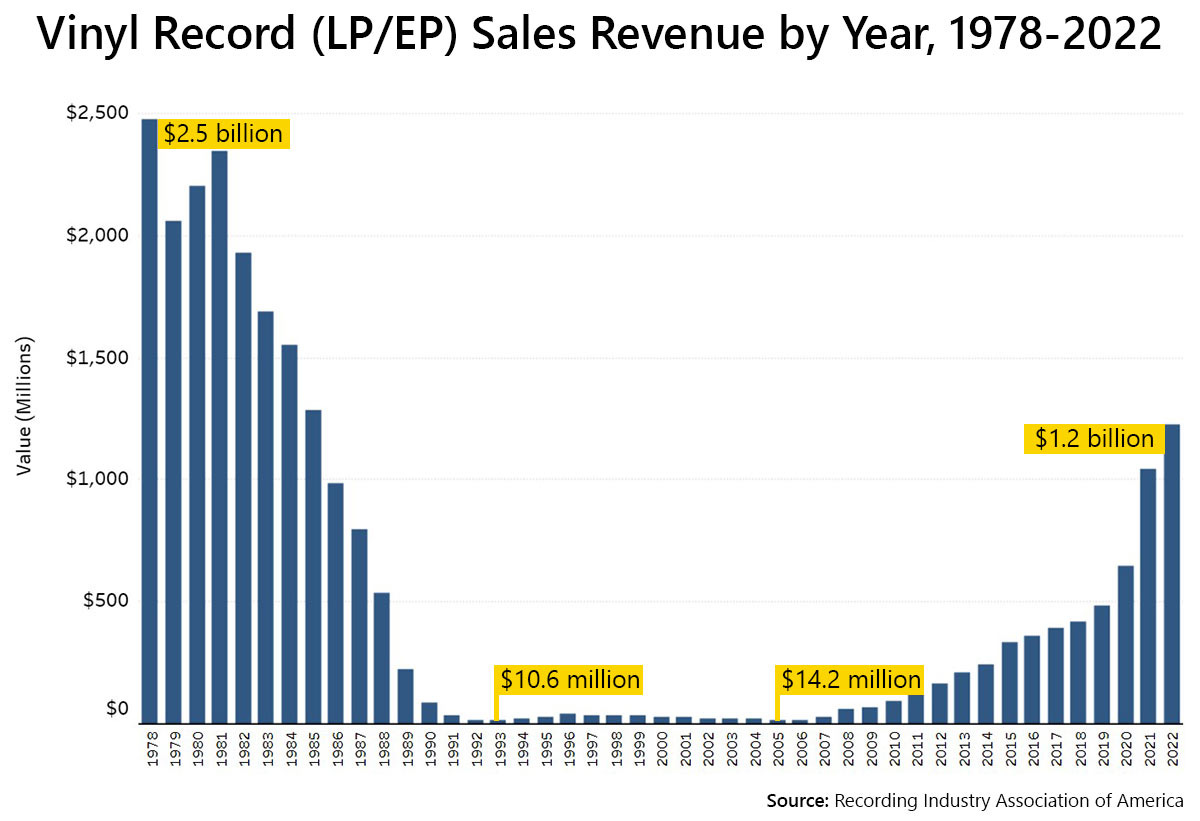Nostalgia Jobs: Why the Future of Work Looks Like the Past
Emotional infrastructure, UBI, and filling the void
It comes as no surprise to anyone following recent developments in AI that the future of work feels uncertain. Agentic-based AI systems, like Manus, are showcasing what the future looks like. With each passing day, the smartest minds in the world are working nonstop to build agentic systems that can automate processes currently run by humans, and this is calling into question jobs that have traditionally been stable, marks of success, and high income. Many of these jobs are going away and will not come back.
In this article, I’ll outline what I’m calling nostalgia jobs, and speculate on where work is heading.
Nostalgia Job (noun)
A job maintained or created primarily for its emotional, cultural, or symbolic value rather than economic necessity. These roles provide comfort, identity, and human connection in an increasingly automated world.
Work as Ritual and Narrative
It is clear that work is not just about survival or earning a paycheck. Jobs double as social fabric, they emotionally anchor us, and they give us purpose and meaning in life. The past shows us how governments handle uncertainty when times get tough.
In 1933, as part of Roosevelt’s New Deal during the Great Depression, the Civilian Conservation Corps was created as a work relief program, employing jobless men to perform manual labor jobs for conservation and development of natural resources. This program was designed to provide men and families jobs, but they weren’t born out of necessity. These programs were primarily created to give people structure, dignity, and hope, during a period of time when work was hard to come by. Pride, purpose, and morale are arguably as important as the money earned through a salary, and a society filled with idle hands and minds often leads to unrest.

Centuries earlier, Rome encountered the same thing. Legionaries who came back from war were often set to build roads, aqueducts, and city walls. Building massive structures like the Colosseum wasn’t just about having a place for entertainment, it was also part of a larger effort to have the general populace work towards a common goal. It was obvious to Roman emperors that people needed more than purely utilitarian output – sustenance for the soul kept the country alive. In a different way, the same was true for the Soviet Union. The promise of full-employment was a feature, not a bug. The state became a factory of jobs, even if that meant many of these jobs were completely unnecessary and often redundant. People having a part to play matters for keeping society intact.
This is why UBI, or Universal Basic Income, has significant limitations. While often proposed as a safety net in an automated future, studies show a troubling pattern:
UBI has been shown, in some cases, to reduce work engagement and result in lower income outcomes
People spend more time recreationally, rather than productively. This doesn’t include more education or time with family. We’re talking about watching TV.
UBI increased the amount of time people spent unemployed, and didn’t improve the quality of their employment after they were employed again
People get used to the additional help and had zero improvement in food security
By the second year of the UBI study, there is no notable physical or mental health improvements
Additional cash had a negative impact on personal finances, increasing debt overall
This isn’t immediately obvious. Projects like Worldcoin have been proposing UBI via proof of humanity for years. Implementing such a program universally, while potentially reducing certain inequalities, might also risk widespread misery, potentially proving detrimental both to collective morale and the stability of the existing social fabric. There are also numerous privacy and security concerns, essentially amounting to a resignation of agency. AI is inevitable, you’ll be useless, here’s some money. Figure it out.
And no, not everyone is an artist. Not everyone, if given the means to survive, will be on a path for self-improvement, painting, writing, and composing music. Realistically, a majority of people will fall into hedonistic cycles. Rome knew this, the Soviet Union knew this, and it is simply a reality of how people operate, especially if they have nothing to do.
Work and Automation: The Next 5 Years
The pattern from the last 12 months is clear. Increasingly agentic AI systems will be utilized to supercharge productivity in the workplace. What used to take 10 people will soon take 8, then 6, then 4. Make no mistake, the most productive people, utilizing AI, will see their salaries and value increase. But the bottom half, perhaps even the bottom 80% will find themselves struggling to keep up.
Have you ever met a 10x or 100x dev? By that, I mean a developer who appears to have the productivity, drive, and intelligence of half a team? These people do exist, and they’re being supercharged by AI. Most skills that are highly valuable online will still be highly valued, but teams will be able to get more done with less people. That said, with AI, agency is the new moat, not intelligence.
Layoffs in big tech are normal. This year, Meta laid off 5% of their staff. Culling is normal. What chief executive wants to keep the low performers around? They aren’t a charity. You aren’t owed a job by Meta.
For SaaS-based businesses, the path towards leveraging AI to achieve more with smaller, high-impact teams is clear.
The statement "80% of the work is done by 20% of the people" is a common observation known as the Pareto Principle or the 80/20 rule, suggesting that a minority of inputs often lead to a majority of outputs. This is the law of the vital few. It will remain the case and will become even more obvious as the vital few utilize AI. The creator economy already reflects the 80/20 rule.
We often only imagine these step changes having an immediate impact on software and anything humans do on a computer. And while that will be impacted first, it is clear that robotics will have its ChatGPT moment soon, with companies like Figure and Tesla working around the clock to make humanoid robots a reality. Every day they get better. While robotics progress felt somewhat stagnant for a while, it is clear we’re in a new renaissance.

In the next 5 years, anything done with a keyboard and mouse will be at risk in some capacity. By 2035, anything people physically do with their bodies will be at risk of automation.
If we accept that many jobs will be automated, where does that leave us? The smartest and most ambitious thinkers, doers, and creators will have gainful employment in the near future, they will adapt, utilize AI when necessary, and find ways to be useful. The same will not be true, by definition, for everyone else. Low performers and unambitious office workers, who already hate their jobs, may soon find themselves displaced. Hating on work is easy to do when you’re employed, but once you’re unable to pay bills and you’re into debt, you quickly find yourself wishing that you had that boring, tedious old office job.
The Growth of Modern Emotional Infrastructure
We know that the economy isn’t just about productivity. That small bookstore you like going to in that cute neighborhood by your house isn’t just about selling books. The bookseller is a literary expert and a community host, not just a business owner. That artsy coffee shop isn’t just about making money off of the coffee, it is a social place, and a robot can’t replicate Sarah making your latte with a smiley face in the foam quite the same way. Older forms of work exist because of how they make us feel. They comfort us.
The emotional infrastructure these jobs provide are arguably more important than SaaS tools you use to manage leads for sales at your job. As our economic scaffolding is shifting, nostalgia jobs offer stability in the form of emotional and sentimental connection.
These trends are not new, but the intensity today is. Back in the 1970’s, people weren’t dressing in a nostalgic fashion and constantly thinking about the past to the degree we are now. Modernity and the world we’re living in has caused us to look backwards for purpose, meaning, and connection. From the resurgence of vinyl records, mailing letters, handcrafted goods, and digital detoxing, it is clear that a significant chunk of society already feels overwhelmed with technology, and dislikes how it makes them feel. We yearn for intentionality and connection.
This trend has been happening for some time in Japan. The emotional infrastructure job space is growing every year, and it will continue to grow as we become increasingly disenchanted with technology and displaced by AI.
Here are some examples of work that exists in Japan as emotional infrastructure that is less common in the west:
Cuddle Cafés (Soineya): Establishments where customers can pay to sleep alongside a stranger in a non-sexual context, providing physical closeness and comfort. The first cuddle café, Soineya, opened in Tokyo's Akihabara district in 2012.
Rent-a-Friend Services: Agencies offer actors who can be hired to play the role of friends or family members for social events, providing companionship and helping clients maintain appearances in social settings.
Crying Therapy Sessions (Rui-katsu): Organized gatherings where individuals watch sad films or listen to emotional stories to encourage crying as a form of stress relief and emotional release.
These are services that are highly in-demand and utilized today in Japan. They are low-tech, and require emotional intelligence and empathy, not AI. In a decade, this will remain the case, as people will continue to prefer the support of real human beings, even as realistic humanoids begin to populate the earth.
Will these services catch on in the west? The emotional void they address is universal. I predict that this trend will continue, and the west will not only embrace this idea, but continue to expand upon it. Emotional connection + yearning for the past = nostalgia jobs.
Nostalgia Jobs as an Economic Subsector
How much of the global economy will these jobs encompass? Using the global wellness market size as an example (which has seen an annual growth rate of around 7.3%), there’s a precedent for this type of labor to expand rapidly. With UBI not being a solution, and AI taking over more white collar work, this guess is conservative. Will nostalgia jobs scale to replace millions of lost jobs? That’s unclear.
Nostalgia jobs will assume many forms. Here are some examples of the types of professions and jobs contained within them:
Symbolic professions: Roles maintained for symbolic resonance. Once self-driving cars are ubiquitous, hiring a human cab driver to drive a manual car and show you the city will be a unique experience. Teachers will work alongside AI, not to devise the perfect curriculum, but to act as a symbolic glue that holds the class and students together.
Ritualized professions: Barbers, baristas, bartenders, waiters, and chefs. I don’t want a haircut by a robot, I want my haircut by John, my longtime barber. I like how he cuts my hair and we love catching up.
Ceremonial professions: Jobs as cultural performance. From the changing of the guard to ceremonial lamplighters and civil war reenactors, these jobs cannot be done by robots. One part theater and one part tradition.
Artisanal professions: From handcrafted chairs to handmade human art, the demand for human created goods will increase. Famous artwork will still retain its value, and handcrafted goods will be a sign of wealth and sophistication (much as they are today).
For many jobs that disappear, we may see symbolic replacements emerge. I don’t believe this will be the case for API engineers, but I do think it will be the case for roles in society that have emotional resonance. All of these examples share a common thread. Work is a vessel for human values. Nobody wants a dystopia. We want a world where a sustainable future is interconnected with nature and community.
Work Beyond Utility
When we talk about preserving work, we are really talking about preserving the inherent values that work provides to our lives. Work provides meaning, rhythm day-to-day, and stability. Work will continue to do this. Our hunter-gatherer brains crave a deeper purpose, and humans are very inventive at figuring out how to provide value to each other.

For many of my friends, their therapists are some of the most important people in their lives. Therapists listen, engage, and offer advice, backed by years of experience and accreditation. As emotional infrastructure in our society expands, we will see more and more roles carry similar weight both utilized and desired. People displaced by technology will have a new opportunity, soon, to redefine how they contribute to society. From professional vinyl record curators to vintage magazine writers and yoga instructors, people will continue to value things that bring them joy.
Perhaps this is the beginning of a positive change. Nobody liked cubicles anyways. Humans can get back to utilizing technology thoughtfully, connecting emotionally, and growing intellectually. We don’t want to raise a generation of children optimized to write code, we want to raise human beings that are adaptable and ready for the future.
In a world increasingly optimized for efficiency, the desire for emotional and cultural connection remains. The future is ours to define.
Thanks for reading.
- Chris








